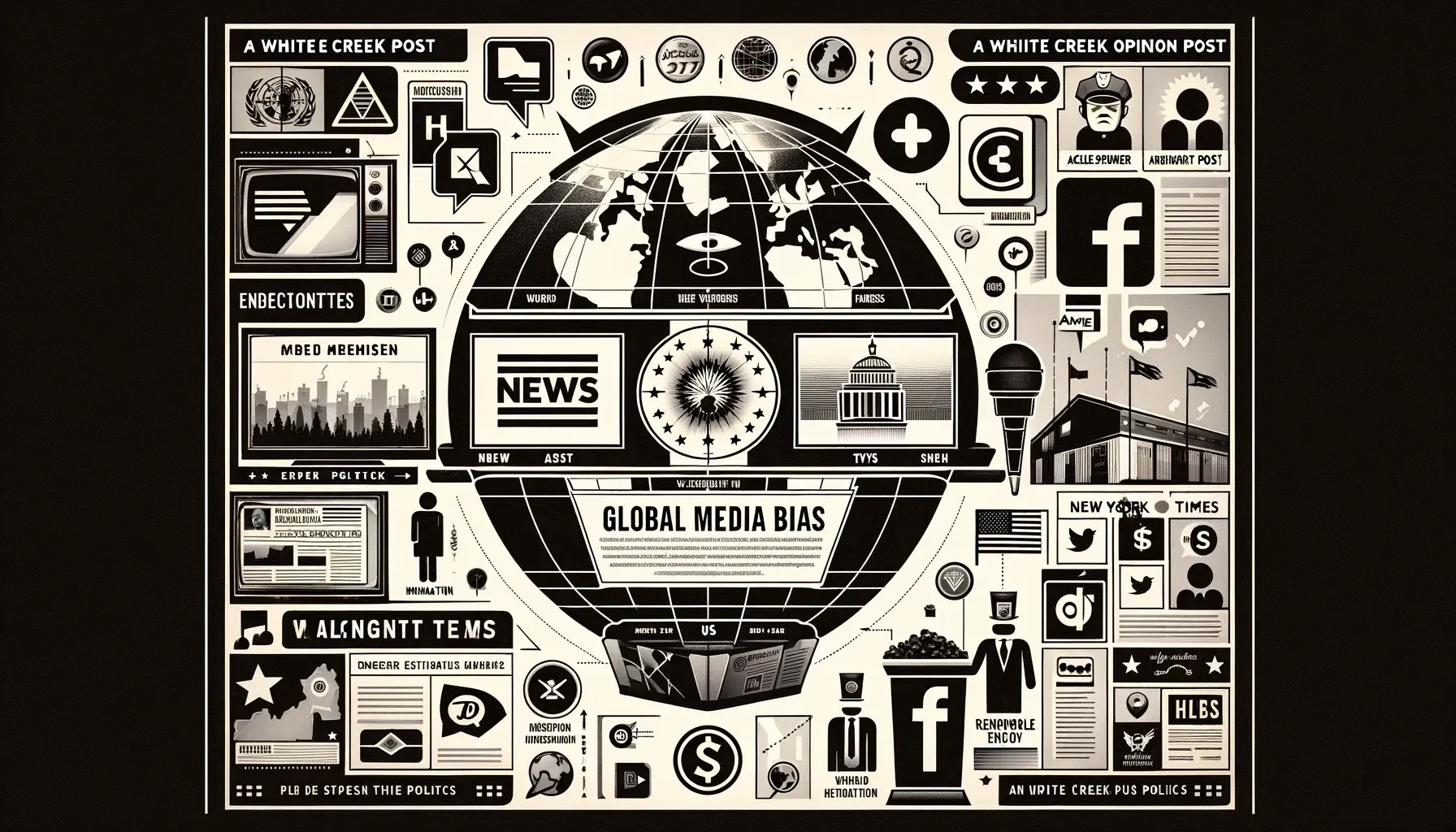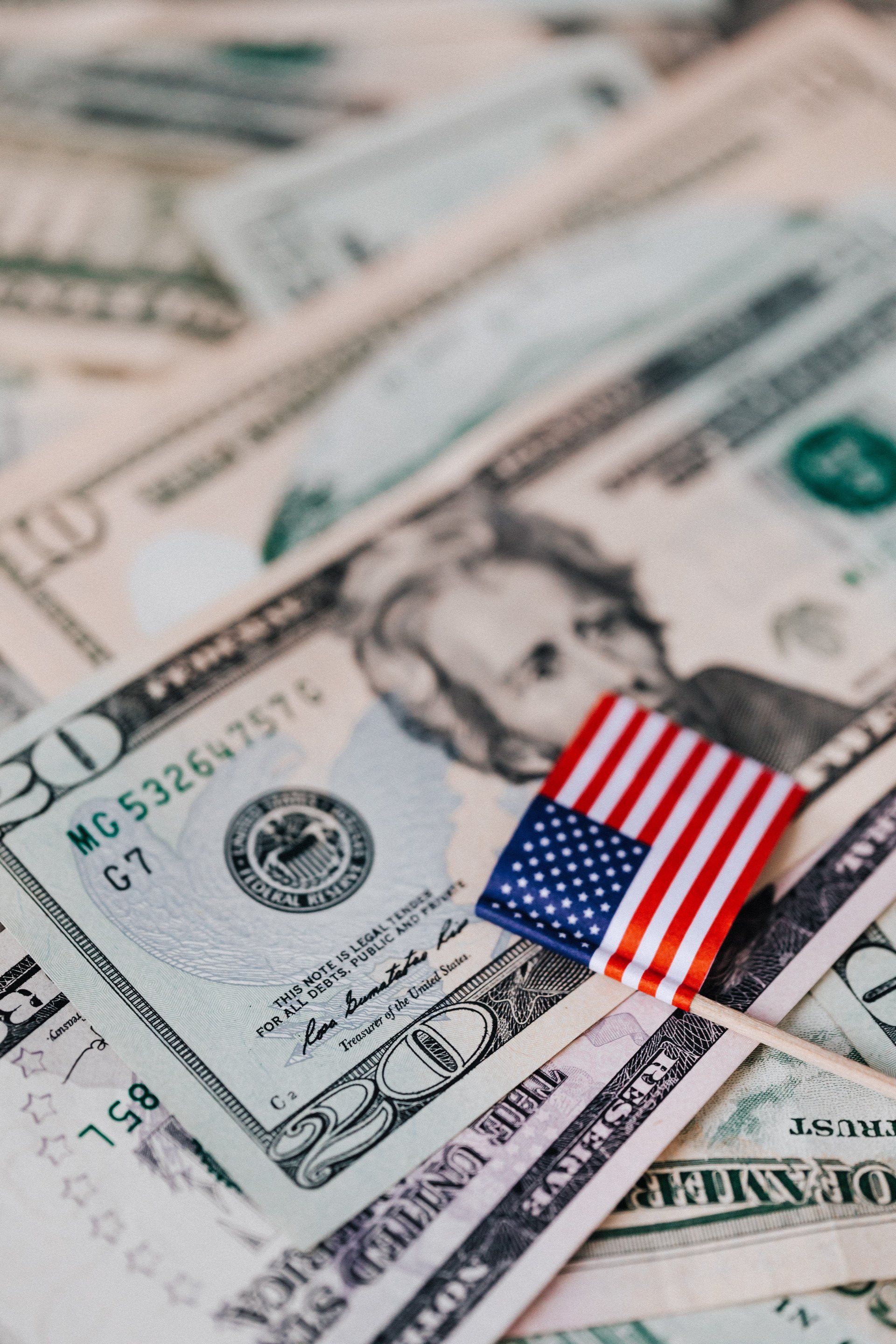Economics – April: The Impact of Sanctions on Russia
It has been just over a year since the implementation of sanctions against Russia, and now is an opportune time to assess their effects. Surprisingly, various forecasts indicate that the Russian economy is projected to grow at a faster rate compared to both the United States and Germany, with different outcomes depending on the political landscape.
While reports boast of the US economy's robustness, there are lingering concerns about the sustainability of the government's policies. For almost 18 months, forecasters have been predicting an imminent recession, with the latest projections for 2023 estimating a GDP growth of 1.5% and first-quarter data revealing a modest 1.1% increase. This leads us to question whether the investments in the Military and the Green Deal are truly transformative or merely short-term expenditures. To illustrate this, a chart depicting global growth, including adjustments for countries such as Russia, is provided below.
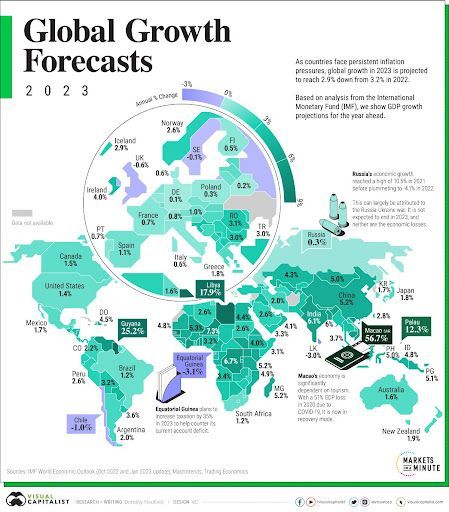
The unemployment rate is expected to inch higher, and the labor force participation, although we are made belief is at the highest rate ever, is still below the 2019 values when individual income was steady increasing but is still declining since 2021.
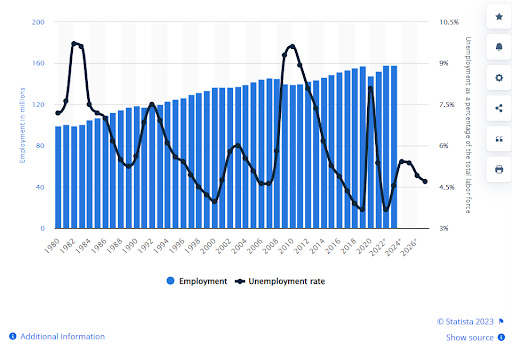
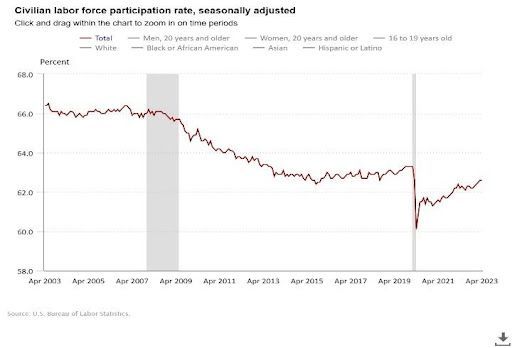
How does National debt shift global economies and how do you feel running about a business going to the bank asking for a debt ceiling increase, without an income plan, other than cutting the peoples salary? Do we really think unlimited spending is sustainable?
United States
The United States boasts both the world's biggest national debt in terms of dollar amount and its largest economy, which resolves to a debt-to GDP ratio of approximately 128.13%. The United States' government's spending exceeds its income most years, and the US has not had a budget surplus since 2001. Perhaps surprisingly, the countries to which the US is most in debt are Japan, which itself has significant debt, and China, which is often viewed as the United States' greatest economic competitor.
China
China’s national debt is currently over 10 trillion USD—however, because of China's massive economy, the country's debt is only 68.06% of its GDP. China's current debt level is a significant increase from 2014, when the national debt was 41.54% of the country's GDP. An International Monetary Fund report from 2015 stated that China’s debt was relatively low, and many economists have dismissed worries over the size of the debt both in its overall size and relative to China’s GDP. China currently has the world’s second-largest economy and the largest population, with approximately 1,425,821,667 people.
Russia’s debt ratio was one of the lowest in the world at 16.99% of its GDP in 2021—though the country's war with Ukraine, which began in early 2022, will likely have some effect on this ratio. Russia is usually one of the ten least-indebted countries in the world. Russia’s debt is currently at a total of just over 302 billion USD. Most of Russia’s external debt is private.
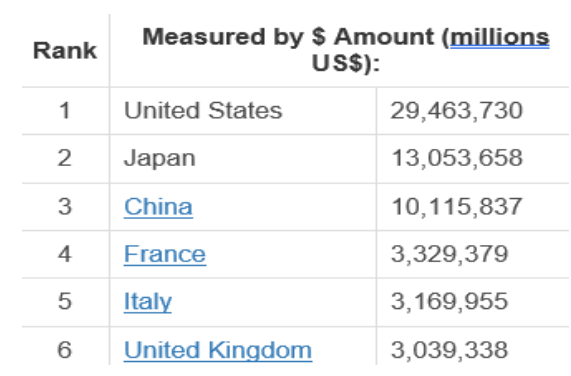
Statistics are what they are, but somehow it appears when the Government added 52000 jobs per Month over the last 6 Months, yes below the 2020 number but does not include Contractors, more on this next time.
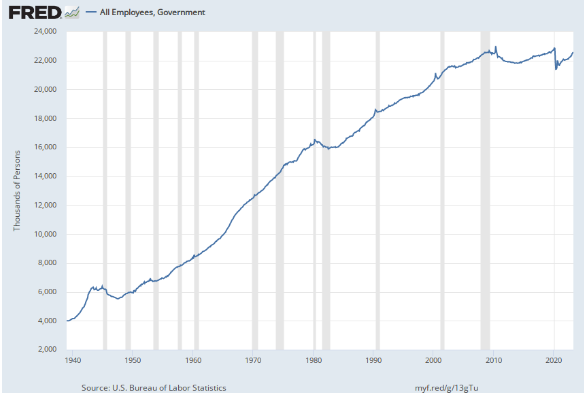



Sign Up For Our Newsletter
We will get back to you as soon as possible
Please try again later


